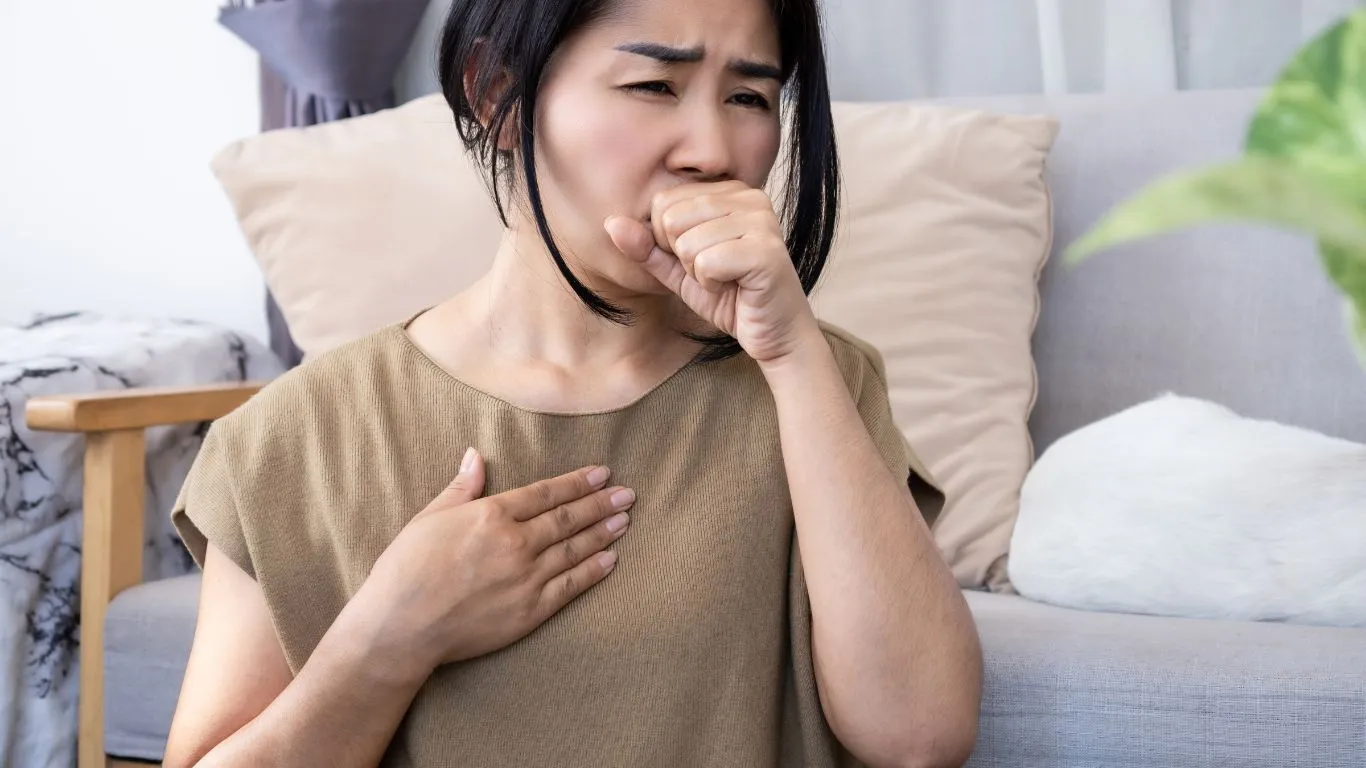Smart Food Combining Tips for GERD That Actually Work
If you’ve ever felt like your chest is on fire after a meal, or you wake up in the middle of the night with that awful acid taste in your throat, then welcome to the club—unfortunately, it’s a club nobody wants to be part of. I’m Camellia, and after years working as a Medical Assistant in a busy Gastroenterology Clinic, I’ve seen firsthand how much of a toll GERD and food combining tips (or lack thereof) can have on people. We’re talking heartburn, regurgitation, bloating—you name it. But here’s the good news: with the right food choices and timing, life with GERD doesn’t have to feel like a constant battle. Stick with me, because I’m sharing real, practical stuff that’s worked for patients—and for me personally.
Understanding GERD: It’s Not Just Heartburn

GERD, or Gastroesophageal Reflux Disease, is more than just the occasional indigestion. It’s a chronic condition where stomach acid frequently flows back into the esophagus, irritating its lining. I’ve had patients come in thinking they had asthma or even heart issues—turns out, it was unmanaged GERD all along. This misdiagnosis happens more often than you’d think.
When you understand how GERD works, it becomes easier to see why your diet plays such a huge role. The lower esophageal sphincter (LES) is supposed to act like a lid, keeping your stomach contents where they belong. But when it’s weak or relaxes at the wrong time—boom, acid reflux.
Common Triggers I See (and You Should Watch For)
- Spicy foods (I know, heartbreaker for chili lovers)
- Coffee (yes, even decaf can be tricky for some folks)
- Carbonated drinks
- Chocolate and peppermint (I call them the sneaky reflux twins)
- Heavy or high-fat meals, especially late at night
In the clinic, it wasn’t unusual to see patients who swore they were eating healthy—but were still triggering their symptoms just by combining the wrong foods at the wrong times. That’s where food combining tips for GERD really come in handy. It’s not just what you eat, but how you eat it that makes a difference.
Food Combining Tips for GERD Relief

This is one of my favorite parts to talk about, because honestly, some of these tips are total game-changers. A few years back, I started experimenting with food combining myself after dealing with my own GERD flare-ups (yep, working in GI doesn’t make you immune!). These aren’t hard rules, more like friendly guidelines you can adjust to fit your lifestyle.
1. Keep Acidic + Starchy Foods Separate
So here’s the thing: starchy foods like bread, rice, or pasta tend to digest slower and ferment when mixed with acidic stuff like tomatoes or citrus. That fermentation can ramp up pressure in your gut, nudging acid up into your esophagus. Instead of spaghetti with tomato sauce, try pasta with a gentle olive oil and veggie combo. Trust me, your stomach will thank you.
2. Don’t Mix Proteins and Carbs in the Same Meal (Too Often)
This one raised a few eyebrows in the clinic, but I’ve seen it work wonders. Meat and potatoes might be a classic, but pairing heavy proteins with starchy carbs can bog down digestion—leading to that sluggish, overstuffed feeling. Try spacing them out. Go for grilled chicken and veggies for lunch, and have a small rice bowl with greens a few hours later.
3. Eat Fruits Alone (Especially Melons)
Fruits digest quickly, so when you mix them with slower-digesting meals, they can sit and ferment. Melons in particular are like the divas of the fruit world—they don’t play well with others. I always recommend having fruits first thing in the morning or as a snack between meals.
4. Wait Before Lying Down
This is a classic tip for a reason: lying down right after eating is practically an invitation for reflux. I tell patients to wait at least 2-3 hours after a meal before reclining or sleeping. And if you’re a napper (no shame!), at least prop yourself up with some pillows.
5. Chew Thoroughly and Eat Mindfully
Sounds simple, but most of us rush through meals without even realizing it. Slow down, chew well, and really pay attention to how different food combos make you feel. It’s not always about eliminating everything—sometimes it’s just a matter of tweaking how you pair your foods.
Why Timing Matters Just As Much As Food Choice

Another thing I noticed working in gastro is how often people skip meals or eat at irregular hours—and then wonder why their symptoms flare up. If you’re only eating one big meal late in the day, your stomach is overworked and your LES is under pressure. It’s like asking your digestive system to run a marathon without warming up.
Pro tip: try spreading your meals out into smaller, balanced portions throughout the day. I recommend three light meals and two snacks. Your body gets the fuel it needs, your stomach isn’t overwhelmed, and your esophagus stays chill (literally).
Don’t worry, I’ve got plenty more to share—from the best GERD-friendly pantry staples to a sample meal plan that actually tastes good. But before we get to all that, let this part sink in and maybe start playing around with your own food combinations. You might be surprised how quickly your body responds to even small changes.
GERD-Friendly Pantry Staples That Make Life Easier

Alright, let’s talk about stocking your kitchen. I can’t tell you how many patients used to ask me, “Camellia, what do I even buy at the store now?” And honestly, I get it—GERD can make you feel like your favorite foods are now forbidden. But here’s the deal: you don’t need to flip your entire diet upside down. Just swap out a few usual suspects and get cozy with gentler alternatives.
Here’s a peek inside what I like to keep in my GERD-friendly pantry:
- Oatmeal – The ultimate gut-soothing breakfast. Low acid, high fiber, and filling without being heavy.
- Almond milk – Way easier on the stomach than dairy, especially for reflux-prone folks.
- Brown rice & quinoa – Mild, versatile, and easy to combine with safe proteins or veggies.
- Bananas & apples (non-citrus fruits) – Low-acid and great for snacks or smoothies.
- Herbal teas – Chamomile and ginger are my go-tos for calming the stomach (skip peppermint—it’s a sneaky trigger!).
- Lean canned proteins – Think tuna in water, or skinless chicken breast. Handy for quick meals without reflux regrets.
Of course, everyone’s triggers are a bit different, but these basics work for a lot of people. I used to tell patients to start with these staples and slowly reintroduce or remove items based on how their body reacts.
Sample GERD & Food Combining Meal Plan

If you’re anything like me, you do better with a plan than vague advice like “just eat smaller meals.” So here’s a real-life example of how I structured meals during a week when my GERD symptoms flared up—and what I’ve suggested to patients who needed structure.
Morning
- Breakfast: Warm oatmeal with almond milk, sliced bananas, and a sprinkle of cinnamon (no sugar, no citrus!)
- Mid-morning snack: A small serving of applesauce or a rice cake with almond butter
Afternoon
- Lunch: Grilled turkey breast with quinoa and steamed zucchini. No sauces, just a touch of olive oil and sea salt.
- Snack: Chamomile tea and a small portion of unsweetened coconut yogurt
Evening
- Dinner: Baked salmon with mashed sweet potato and sautéed spinach. Light and digestible!
- Post-dinner tip: I usually stop eating by 7 PM and wait 3 hours before bed. Total game-changer for nighttime reflux.
This kind of meal structure keeps things light, predictable, and easy on the digestive system. And honestly, it takes a lot of the stress out of eating when you’re already dealing with symptoms.
Tracking Your Symptoms (Without Going Overboard)

Here’s a little secret: some of the best insights I’ve ever gotten about my own digestive health didn’t come from labs or charts—they came from keeping a simple food and symptom journal. Nothing fancy, just a notepad or an app where I’d jot down:
- What I ate
- How I combined it
- What time I ate
- How I felt after (bloating, heartburn, fatigue, etc.)
Some patients were super skeptical when I first suggested this in the clinic. But after just a week or two of tracking, patterns start to pop out. One woman found that eating protein with leafy greens in the afternoon triggered fewer symptoms than when she had fruit and protein together. Another guy realized his “safe” morning smoothie was actually packed with hidden triggers like citrus, protein powder, and dairy—all together!
The goal isn’t to obsess or become hyper-vigilant—it’s about getting clarity. And once you start seeing what works for you, those GERD flare-ups don’t feel so mysterious or random anymore.
Small Habits That Make a Big Difference

Let’s talk about the in-between stuff. You know, the daily habits that seem tiny but actually pack a punch when it comes to GERD relief. These aren’t groundbreaking, but when you stack them up? They matter.
- Wear loose clothing around your waist – Sounds silly, but even a snug waistband can increase pressure on your stomach and trigger reflux.
- Elevate your head at night – A wedge pillow or a couple of stacked pillows can help gravity do its thing and keep acid down.
- Stay upright after meals – Just a 10-15 minute stroll after lunch can help digestion and prevent symptoms.
- Hydrate smartly – Sip water throughout the day, but avoid chugging large amounts during meals, which can dilute stomach acid and slow digestion.
I remember one of my patients, a young woman in her 30s, who had been popping antacids like candy. Once she started eating smaller meals, walked after lunch, and swapped her evening peppermint tea for chamomile, her symptoms reduced dramatically in just two weeks. Sometimes the little changes are the most powerful.
And hey, I know all of this might feel like a lot to keep up with—but it doesn’t need to be overwhelming. You don’t have to change your entire lifestyle overnight. Start small. Tweak one meal, try one food combination tip. Pay attention to how you feel, and keep what works.
Long-Term GERD Management: It’s a Lifestyle, Not a Life Sentence

So, by now you’ve probably figured out that managing GERD isn’t just about popping antacids or cutting out your favorite spicy tacos (although, yeah… you might want to ease up on those). It’s about creating a sustainable lifestyle that works for you. And listen, I get it—it’s not always easy. When I first started applying these food combining tips for GERD to my own routine, I slipped up plenty. But here’s the thing: consistency matters more than perfection.
When I worked in the clinic, I saw folks who came in frustrated, thinking they’d have to live on bland chicken and plain rice forever. Nope. It’s not about restriction—it’s about smarter choices and building habits that keep your digestive system happy over time. I always tell people: think of this as a marathon, not a sprint.
The Mind-Gut Connection (Yes, Stress Really Does Mess with Digestion)
This part doesn’t get talked about enough, but let me tell you—stress and GERD are tight buddies. You can be eating all the right things and still end up feeling that familiar burn if your stress is out of control. I had a patient once, a high school teacher, who only had GERD symptoms during exam week. Food wasn’t her trigger—stress was.
So what can you do? Try building in little de-stressors daily. Here are some things that worked for me and my patients:
- Deep breathing – I’m talking simple 4-7-8 breathing for a few minutes after meals. Helps digestion, calms the nervous system.
- Gentle walks – Not only great for digestion, but also clears your head. I’d loop around the clinic parking lot during lunch breaks—totally helped reset my day.
- Limit screen time during meals – Mindful eating helps your brain and stomach sync up better, and you’ll know when you’re full before it’s too late.
Don’t underestimate how much your mental state can influence your gut. It’s wild how the two are connected—but also super empowering once you learn how to manage both.
GERD and Food Combining Tips: The Most Overlooked Advice

Okay, let’s circle back to the basics for a second. Because there are a few GERD and food combining tips that I swear get overlooked all the time—and yet, they can make such a big difference. Think of these as the underrated gems in your reflux-fighting toolkit:
1. Always Start Light
I usually begin my day with something super gentle—like oatmeal or a banana. Starting the morning with greasy breakfast meats or citrus juice? Recipe for disaster. You want to ease your stomach into the day, not throw it a curveball.
2. Watch Your Meal Order
Even when eating GERD-safe foods, the order matters. I’ve found that having veggies first, then protein, then carbs works best. It’s a simple shift, but it helps digestion flow more smoothly and prevents that heavy, bloated feeling.
3. Avoid Drinking Too Much with Meals
Water is great (obviously), but chugging it with your meal can dilute digestive enzymes and slow things down. Sip instead. I usually wait about 30 minutes after a meal before drinking a full glass.
4. Ditch the “Clean Plate Club” Mentality
This one hits home. Growing up, I was taught to finish everything on my plate—even when I was full. But with GERD, overeating is a huge trigger. I had to retrain myself to stop eating when satisfied, not stuffed. It takes practice, but it’s a game-changer.
Building a GERD-Friendly Kitchen Routine
Let’s be real—habits don’t stick unless they fit into your real life. Here’s how I help patients (and myself) make it manageable:
- Prep in batches – Cook a few basic ingredients on Sunday: quinoa, grilled chicken, roasted veggies. Mix and match through the week.
- Use small plates – Helps you eat smaller portions without feeling like you’re depriving yourself. Mind tricks work!
- Keep a “safe list” on your fridge – Mine includes bananas, rice, turkey, oatmeal, steamed spinach, and almond milk. When I’m tired or stressed, I don’t have to overthink it.
And remember: food is supposed to be enjoyable. Just because you’re managing GERD doesn’t mean you have to dread meals. I promise, with the right combinations and habits, you can still love what you eat—and feel good after, too.
References
Disclaimer
This article is for informational purposes only and based on personal experience and practical knowledge as a Medical Assistant in a Gastroenterology Clinic. It is not intended to diagnose, treat, or replace medical advice from your healthcare provider. Always consult with a licensed medical professional regarding your specific condition or symptoms.

Camellia Wulansari is a dedicated Medical Assistant at a local clinic and a passionate health writer at Healthusias.com. With years of hands-on experience in patient care and a deep interest in preventive medicine, she bridges the gap between clinical knowledge and accessible health information. Camellia specializes in writing about digestive health, chronic conditions like GERD and hypertension, respiratory issues, and autoimmune diseases, aiming to empower readers with practical, easy-to-understand insights. When she’s not assisting patients or writing, you’ll find her enjoying quiet mornings with coffee and a medical journal in hand—or jamming to her favorite metal band, Lamb of God.






